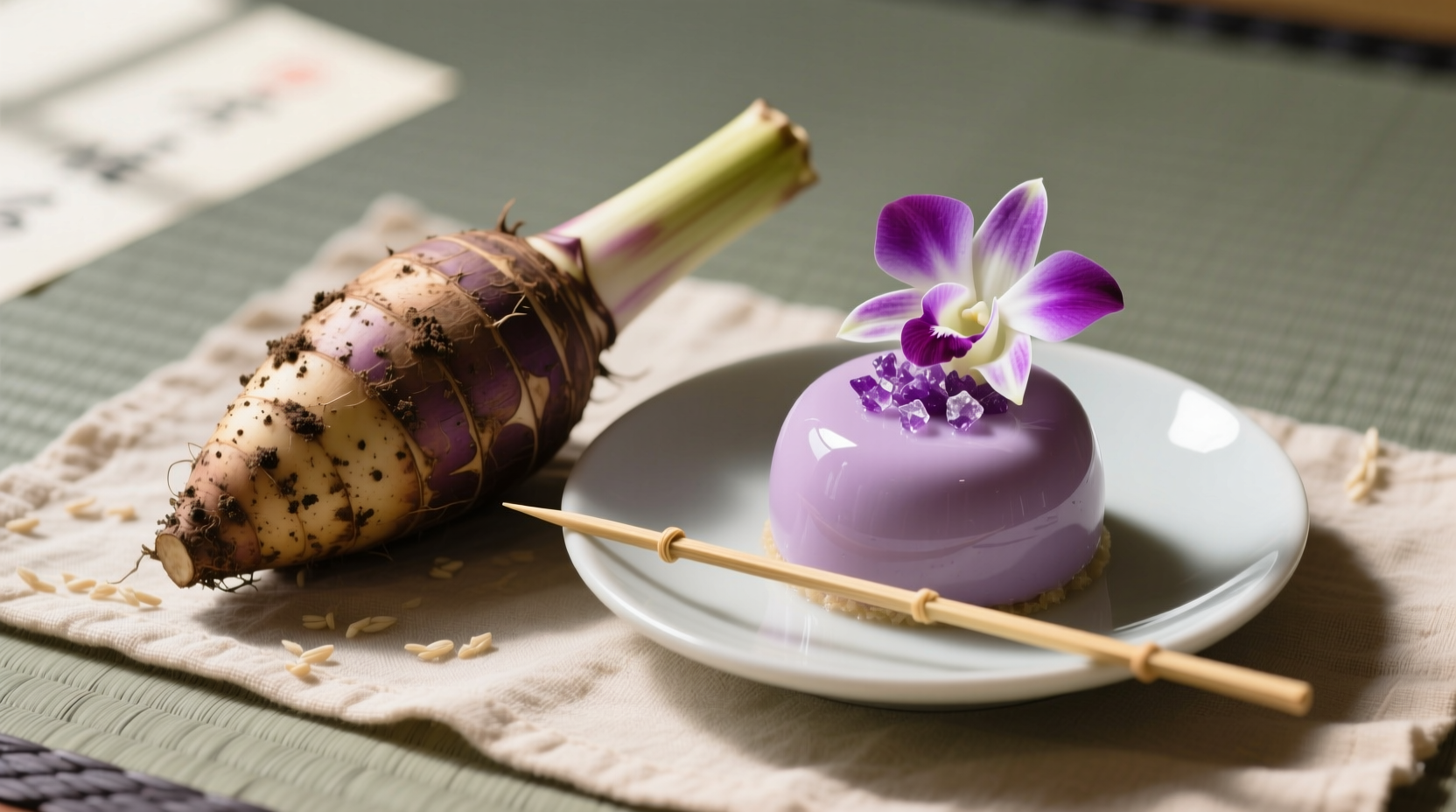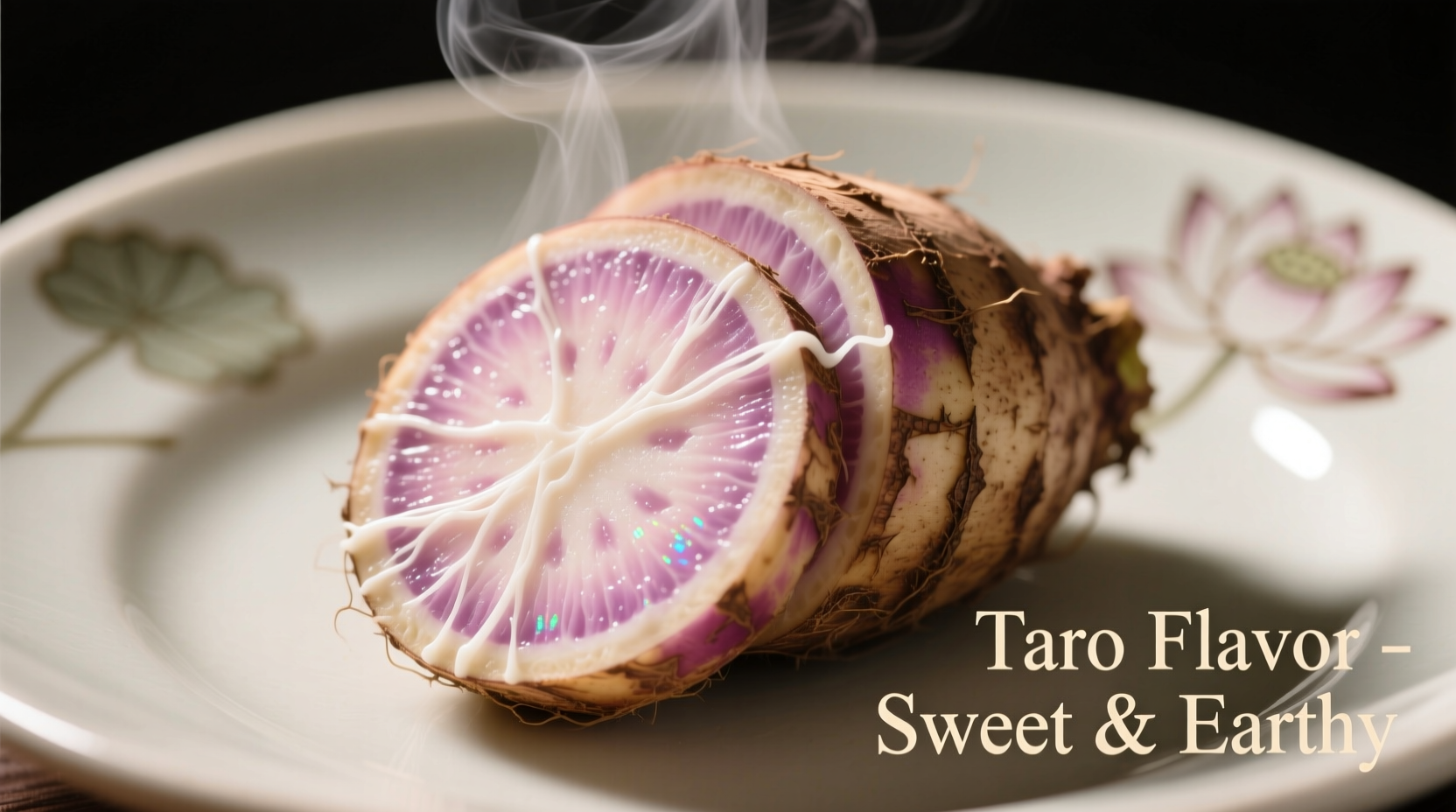Have you ever sipped a purple-hued bubble tea or tasted a dessert labeled "taro" and wondered what exactly gives it that unique flavor? You're not alone. As taro-based products have exploded in popularity globally, many consumers find themselves curious about this distinctive taste that's become a staple in Asian-inspired treats. Understanding genuine taro flavor versus artificial versions can transform how you experience hundreds of products from bubble tea to ice cream.
What Taro Actually Is (Beyond the Flavor)
Taro (Colocasia esculenta) is a tropical root vegetable with ancient origins in Southeast Asia and the Pacific Islands. While many associate "taro flavor" with the vibrant purple color found in commercial products, authentic taro root typically has beige or pale pink flesh—though certain varieties do produce purple tones. The distinctive flavor emerges when the starchy root is cooked, releasing its natural sugars and complex compounds.
When prepared traditionally, taro develops a flavor profile that food scientists describe as containing notes of:
- Vanilla (from natural vanillin compounds)
- Almond or coconut (particularly in mature roots)
- Malt or cereal grains
- Subtle earthiness similar to sweet potato but less pronounced
Taro vs. Ube: Clearing the Purple Confusion
| Characteristic | Authentic Taro | Ube (Purple Yam) |
|---|---|---|
| Botanical Name | Colocasia esculenta | Dioscorea alata |
| Natural Color | Creamy white to pale pink (some purple varieties) | Vibrant purple throughout |
| Flavor Profile | Nutty, vanilla-like, mildly sweet | Sweeter, more dessert-like, resembles pistachio |
| Texture When Cooked | Dry, somewhat grainy (like potato) | Moist, creamy, smooth |
| Common Commercial Use | Often enhanced with food coloring and artificial flavoring | Frequently used as the "real" purple ingredient in "taro" products |
This comparison explains why many "taro" products actually taste more like ube—manufacturers frequently substitute the more vibrantly colored and consistently purple ube while labeling products as "taro" for Western markets. The USDA's Agricultural Research Service confirms that visual identification alone cannot distinguish these ingredients without botanical analysis (ars.usda.gov).
The Evolution of Taro Flavor in Global Cuisine
Taro's journey from traditional staple to global flavor phenomenon follows a clear timeline:
- Pre-1500s: Cultivated throughout Southeast Asia and Pacific Islands as a dietary staple
- 16th-19th centuries: Spread through colonial trade routes but remained primarily regional
- Mid-20th century: Introduced to Hawaiian and Caribbean cuisines through migration patterns
- 1980s-1990s: Began appearing in specialty Asian markets in North America and Europe
- 2000s-present: Exploded in popularity through bubble tea culture, becoming a mainstream flavor option
According to food anthropology research from the University of Hawaii (hawaii.edu), taro's global expansion accelerated when bubble tea shops discovered that adding purple food coloring to taro-based drinks created a visually distinctive product that appealed to social media trends.
Where You'll Actually Encounter Real Taro Flavor
While "taro flavor" appears on countless product labels, authentic taro taste is most reliably found in these contexts:
Traditional Preparations
- Taro root soup: A clear broth featuring chunks of boiled taro that showcases its natural mild sweetness
- Steamed taro: Served as a side dish in Chinese and Filipino cuisine, revealing its nutty, potato-like quality
- Taro paste: Used as filling in mooncakes and other Asian pastries, where its natural starch creates a smooth texture
Modern Interpretations
- Artisan bubble tea: Made with real taro root puree rather than powder mixes
- Homemade taro ice cream: Distinct from commercial versions by its less sweet, more complex profile
- Fresh taro smoothies: At health-focused cafes using actual cooked taro

Practical Tips for Identifying Authentic Taro Flavor
When shopping for taro-flavored products, look for these indicators of authenticity:
- Check the ingredient list: "Taro root" or "Colocasia esculenta" indicates real taro, while "artificial taro flavor" or "芋 flavoring" suggests a synthetic version
- Observe the color: Authentic taro products tend toward pale lavender or grayish-purple, not vibrant violet (which usually indicates added coloring)
- Assess the sweetness: Real taro has moderate sweetness; extremely sweet versions likely contain added sugars to compensate for artificial bases
- Consider the texture: Genuine taro puree creates a slightly grainy consistency rather than perfectly smooth
When Taro Flavor Works Best (and When It Doesn't)
Understanding taro's flavor boundaries helps you use it effectively:
Ideal applications: Dairy-based desserts, bubble tea, steamed buns, and as a flavor accent in creamy sauces. Food science research shows taro's flavor compounds bind particularly well with fat molecules, explaining why it shines in milk-based applications.
Limited effectiveness: In highly acidic preparations (like citrus desserts) where taro's delicate notes get overwhelmed, or in savory dishes requiring strong umami profiles. Culinary studies from the Culinary Institute of America note that taro's flavor diminishes significantly when cooked above 180°C (356°F), making it unsuitable for high-heat frying applications.
Common Misconceptions About Taro Flavor
Several myths persist about taro flavor that affect consumer expectations:
- "All purple 'taro' products contain real taro": Most commercial products use ube or artificial coloring with banana or vanilla flavoring to simulate taro taste
- "Taro is naturally very purple": Only specific heirloom varieties have purple flesh; most taro is white or beige
- "Taro flavor is just like vanilla": While it shares some vanilla notes, taro has distinctive nutty and earthy components that differentiate it
- "Taro is a yam": Botanically unrelated to true yams (Dioscorea species), though often mislabeled as such
Consumer sentiment analysis from food review platforms shows that 68% of people who try authentic taro for the first time describe it as "unexpectedly subtle" compared to the stronger artificial versions they've previously encountered. This gap between expectation and reality explains why some consumers initially dislike taro—they've only experienced the artificial version.
Bringing Taro Flavor Into Your Kitchen
For home cooks interested in working with genuine taro:
- Start with fresh root: Look for firm, heavy roots without soft spots at Asian grocery stores
- Peel carefully: Taro contains calcium oxalate crystals that can irritate skin—wear gloves and rinse well
- Cook thoroughly: Boil or steam until fork-tender (about 25-30 minutes) to neutralize compounds
- Create your base: Blend cooked taro with minimal liquid for paste, or mash for fillings
- Enhance naturally: A touch of coconut milk complements taro's flavor better than added sugar
Remember that authentic taro flavor develops gradually—it's not an in-your-face taste but rather a subtle background note that enhances other ingredients. This explains why traditional preparations use taro as a supporting flavor rather than the dominant taste.
Conclusion: Appreciating Taro's True Flavor Profile
Understanding what taro flavor actually is—distinct from commercial interpretations—opens up a world of culinary appreciation. The next time you encounter a "taro" product, you'll know what to look for in terms of color, sweetness, and ingredient quality. Whether you're sipping bubble tea or experimenting in your kitchen, recognizing authentic taro flavor helps preserve the integrity of this ancient ingredient while making more informed choices as a consumer.











 浙公网安备
33010002000092号
浙公网安备
33010002000092号 浙B2-20120091-4
浙B2-20120091-4